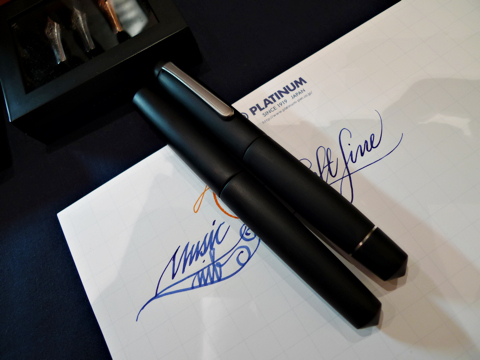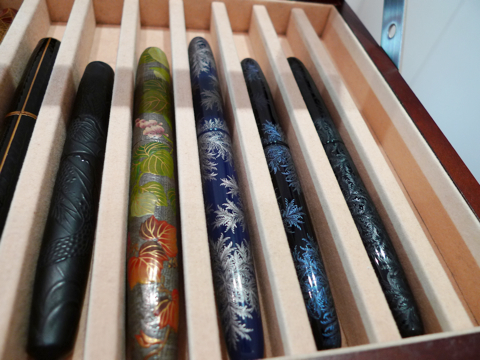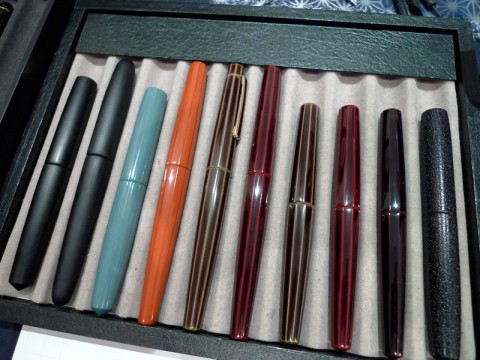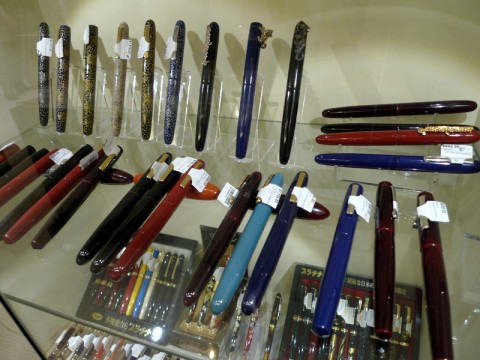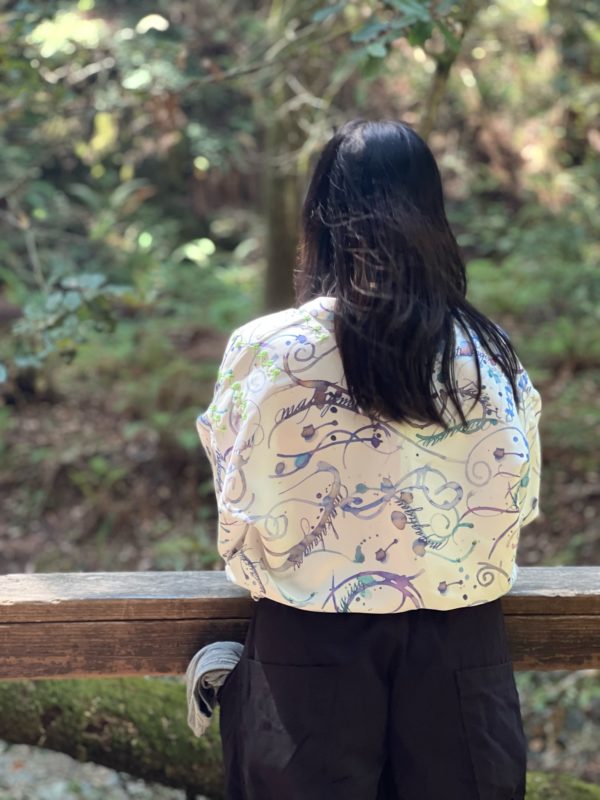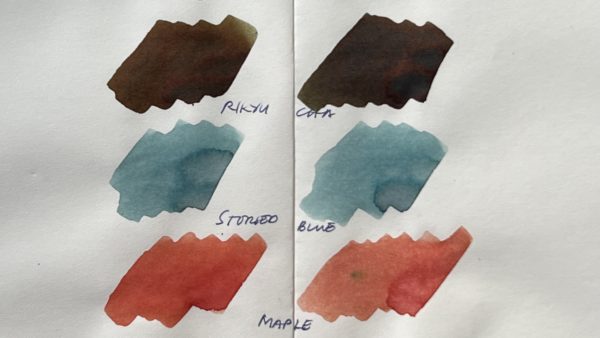Mr. Yoshida sat behind a table of treasures: nib testers from super fine to music, trays filled with new wonders of chinkin and maki-e. He was gracious about my fangirlness. When I took three Nakayas out of my pen kimono, his eyes widened and he smiled. He asked me, through his interpreter (whom I later learned was a freelancer), what my problems were with the pens. I said, flow. He asked me what I used the pens for, because the level of flow would depend on that. I showed him how I wrote and he nodded.
He then proceeded to knock out all the feeds and replace them with new ones, which he took from a tiny plastic box.
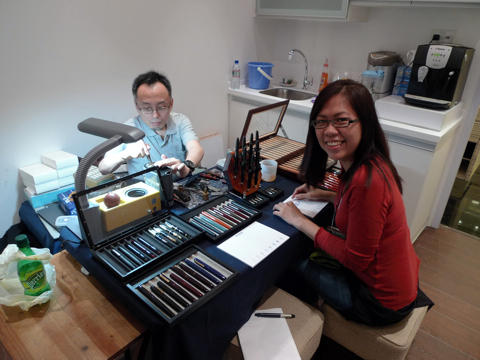
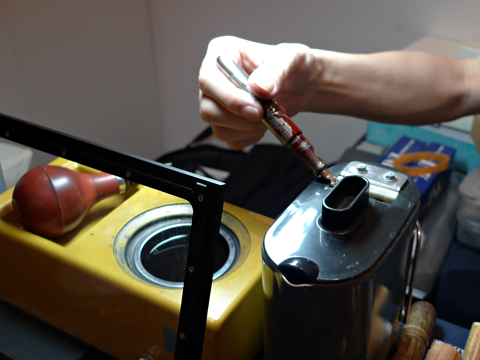
This contraption had water inside. He plugged it in and waited for the water to boil before pressing the feed against a tiny slit on top. Beside that contraption is an ultrasonic cleaner. The water is dark from ink. On top of it is a rubber bulb attached to a Nakaya/Platinum cartridge with (I assume) the bottom taken out. He used this to flush the pens.
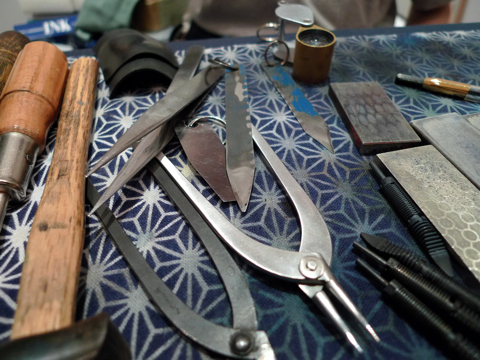
He encouraged me to ask questions while he was working on my pens. He liked drawing diagrams. Here are two of them. The one on the left explains why people who bear down really hard on their nibs eventually complain about no ink flow. The one on the right explains why the angle of the nib versus the paper is one of the determining factors behind ink flow.
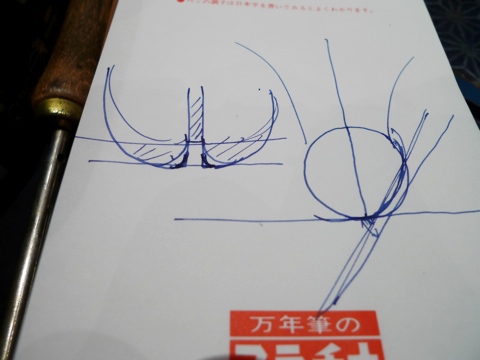
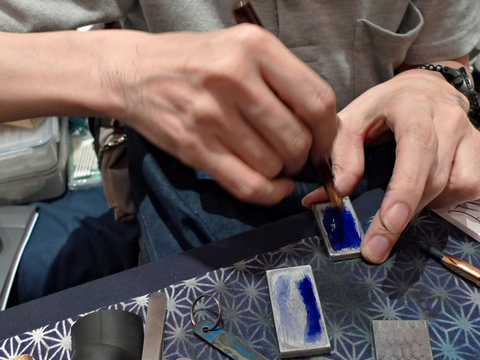
He used figure 8s and small sweeps to adjust my nibs to the angle of my handwriting, looking at the nibs through his loupe every few strokes. He also moved from one polishing stone to another. He would hand the pen to me to try, and I would describe if I felt any roughness or too much resistance by writing in the air. He would mirror my gesture and then return the nib to the polishing stone.
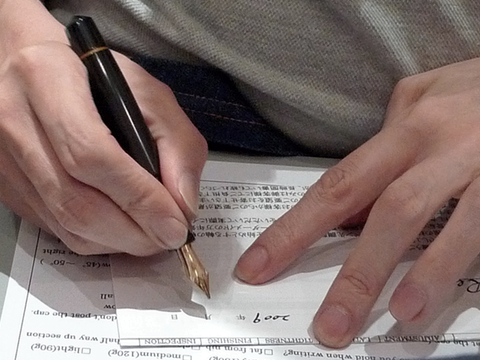
His personal pen is a weighted Piccolo with a music nib. He brought it out of its Cohiba cigar case to write my name and the date on a document guaranteeing his craftsmanship. I asked about his ink – a black with a strong hint of brown. He said he’d asked the Sailor guys to make it especially for him. (Talk about job perks.)
I am delighted to report that the Nakayas are now well-behaved and flowy. Even the new one. Yes, a new Nakaya has joined the three in the kimono.
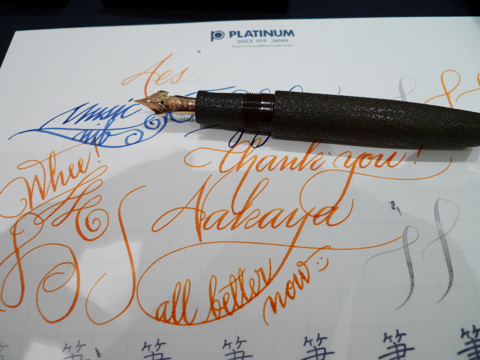
The “Aes” on the upper part of the sheet was how the ishi-me kan-shitsu wrote before the adjustment. Everything else is after. Mr. Yoshida’s first question about this pen was actually about the ink – he believes that not all ink is the same, and every ink flows differently depending on its composition.
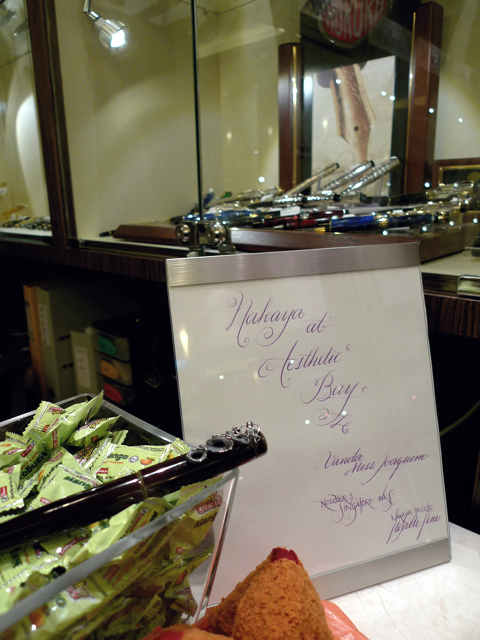
I drooled all over the new Nakayas Mr. Yoshida displayed on his table. The hairline finish is in my sights, as are the new chinkin styles. But I really wanted a heki tame, and found the Neo Standard shape very comfortable in the hand. That will be in the next blog entry. In the meantime, enjoy the Nakaya eye candy.
